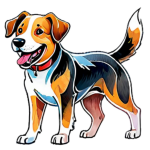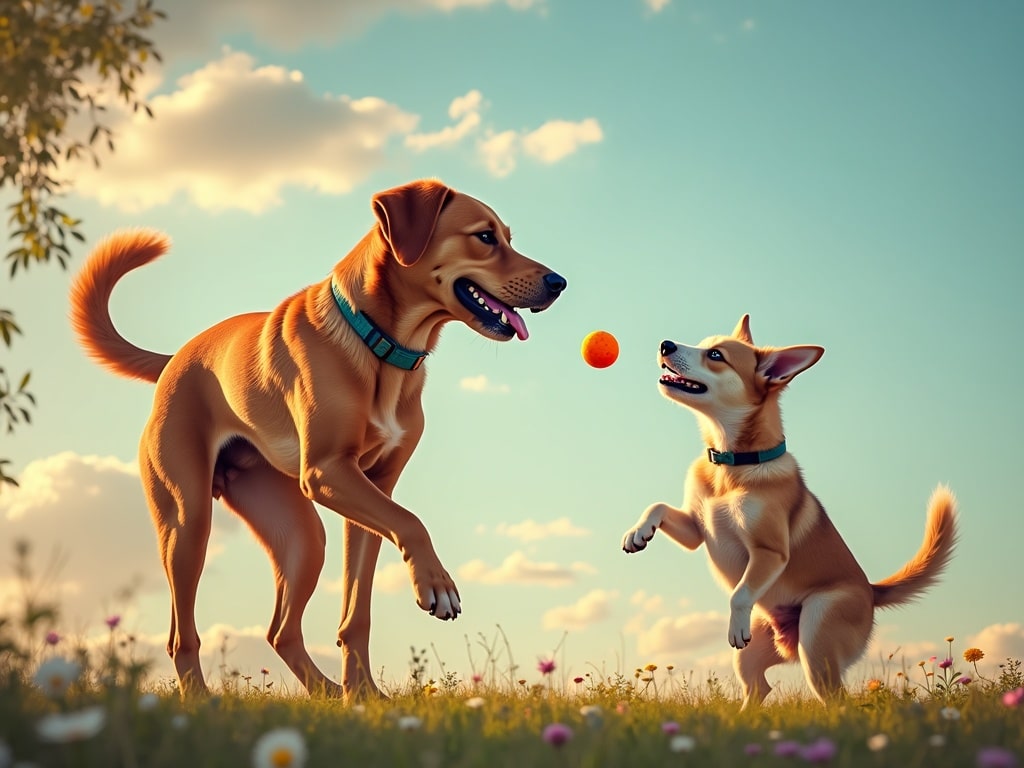Unlocking Your Dog's Potential: Mastering the Art of ‘Touch' or Targeting
Imagine a world where your dog readily responds to your gentle guidance, navigating obstacles with grace, and offering a focused, calm presence even in distracting environments. This isn't a fantasy achievable only by professional trainers; it's the reality you can unlock by teaching your dog the simple yet powerful behavior of ‘touch,' also known as targeting. This seemingly basic command forms the bedrock for a multitude of advanced skills, from obedience to agility and even addressing behavioral challenges.
What is ‘Touch' or Targeting?
At its core, ‘touch' or targeting involves training your dog to make physical contact with a designated object – usually your hand, but it could also be a target stick, a cone, or any other defined item. The beauty of this exercise lies in its simplicity and versatility. The dog learns that by touching the target, they earn a reward, creating a positive association that motivates them to repeat the behavior.
Think of it as teaching your dog to high-five on cue, but with far more practical applications. The target becomes a focal point for the dog's attention, a tool for guiding their movement, and a means of clear communication between you and your furry friend.
Why Teach Your Dog ‘Touch' or Targeting? The Benefits Unveiled
Beyond being a fun trick to impress your friends, ‘touch' or targeting offers a wealth of benefits that extend far beyond the superficial:
- Improved Focus and Attention: By focusing on the target, your dog learns to tune out distractions and concentrate on the task at hand.
- Enhanced Communication: The target becomes a clear signal, eliminating ambiguity and fostering a stronger connection between you and your dog.
- Body Awareness and Coordination: Navigating towards and touching the target enhances your dog's awareness of their body in space, improving their overall coordination.
- Foundation for Advanced Training: ‘Touch' can be used to teach a wide range of skills, from heeling and recalls to agility obstacles and even tricks.
- Behavior Modification: Targeting can redirect unwanted behaviors, such as jumping or barking, by providing a positive alternative.
- Confidence Building: As your dog masters the ‘touch' command, they gain confidence in their abilities and their relationship with you.
Getting Started: A Step-by-Step Guide to Teaching ‘Touch'
Ready to embark on this rewarding training journey? Here's a step-by-step guide to teaching your dog the ‘touch' command:
Step 1: Choosing Your Target and Reward
The Target: Start with your open palm, presented at your dog's nose level. Alternatively, you can use a target stick – a lightweight wand with a ball or padded end.
The Reward: Select high-value treats that your dog loves. Small, soft treats work best, as they can be quickly consumed, allowing for rapid repetitions.
Step 2: Introducing the Target
Hold your open palm (or target stick) a few inches from your dog's nose.
The moment your dog sniffs or touches the target (even accidentally), immediately mark the behavior with a verbal cue like Yes! or a clicker sound.
Follow the marker with a treat, delivered close to the target.
Step 3: Shaping the Behavior
Repeat the process, gradually increasing the criteria.
Encourage a more deliberate touch, rewarding only when your dog makes a clear, intentional contact with the target.
If using your hand, aim for a nose touch. If using a target stick, reward a nose or muzzle touch.
Keep training sessions short and positive, ending on a successful note.
Step 4: Adding the Verbal Cue
Once your dog consistently touches the target, introduce the verbal cue “Touch!” just before presenting the target.
Say Touch, present the target, and reward the touch with a marker and treat.
Repeat this several times, gradually fading the physical prompt.
Step 5: Increasing Distance and Duration
Gradually increase the distance between you and the target, rewarding your dog for moving towards and touching it.
Once your dog is reliably touching the target from a distance, you can start to increase the duration of the touch, rewarding them for holding their nose on the target for a few seconds.
Troubleshooting Common Challenges
Even with the best intentions, you might encounter some challenges along the way. Here are a few common issues and how to address them:
Dog Not Showing Interest: If your dog isn't interested in the target, try using higher-value treats or making the target more enticing by rubbing it with a smelly treat.
Dog Biting or Mouthing the Target: If your dog is biting or mouthing the target, go back to basics and reward only gentle touches. You can also try using a more durable target, such as a plastic lid or a metal spoon.
Dog Losing Focus: If your dog is losing focus, shorten your training sessions and work in a less distracting environment. You can also try using a higher rate of reinforcement, rewarding your dog more frequently.
General Frustration: If either you or your dog are feeling frustrated, take a break! Training should be a positive and enjoyable experience for both of you.
Expanding the Possibilities: Advanced Applications of ‘Touch'
Once your dog has mastered the basic ‘touch' command, you can start to explore its many advanced applications:
Heeling: Use the target to guide your dog into the heel position and maintain it while walking.
Recalls: Teach your dog to run to the target when called, reinforcing a reliable recall.
Agility: Guide your dog over jumps, through tunnels, and around weave poles using the target as a visual cue.
Tricks: Use the target to teach your dog a variety of tricks, such as spinning, bowing, and playing dead.
Redirecting Unwanted Behaviors: If your dog starts to bark at the mailman, redirect their attention to the target and reward them for touching it, providing a positive alternative to barking.
Creating Calmness: Direct your dog to touch a mat or bed for a prolonged period to encourage relaxation and a sense of security. This is particularly useful in stressful environments.
The Power of Positive Reinforcement
Remember, the key to successful ‘touch' or targeting training (and all dog training, really) is positive reinforcement. Focus on rewarding desired behaviors and avoid punishment, which can damage your relationship with your dog and create fear and anxiety. By using positive reinforcement, you'll build a strong bond with your dog and unlock their full potential.
Final Thoughts: A World of Possibilities at Your Fingertips
Teaching your dog ‘touch' or targeting isn't just about teaching a trick; it's about opening a world of possibilities. It's about enhancing communication, building confidence, and strengthening the bond between you and your furry companion. So, grab your target, gather your treats, and embark on this exciting training adventure. You'll be amazed at what you and your dog can achieve together. With patience, consistency, and a positive attitude, you can unlock your dog's potential and create a deeper, more rewarding relationship.


